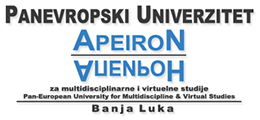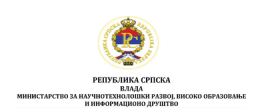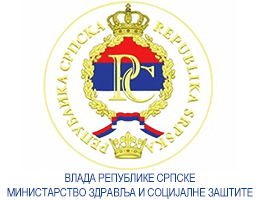Differences in Morphological Characteristics and Motoric Abilities Between Boys and Girls From II to V Grades of Elementary School
Volume 15, Issue 1 (2025)
Volume 15, Issue 1 (2025)
Differences in Morphological Characteristics and Motoric Abilities Between Boys and Girls From II to V Grades of Elementary School
Abstract:
The research was conducted on a sample of
N=1850 students from the 2nd to the 5th grade of elementary
school, of which there were N=989 (53%) male
respondents and N=861 (47%) female respondents. The
research aimed to determine the differences in morphological
characteristics and motor abilities between boys
and girls from the 2nd to the 5th grade of elementary
school. The descriptive statistical method and the t-test
for independent samples were applied from the statistical
methods. The statistical program for personal computers,
SPSS for Windows version 22, was used for data processing.
Analyzing the results of morphological characteristics,
it was determined that boys have a higher body
mass index (BMI) and skin fold on the back (subscapular)
than girls. No differences were found in the skin fold
of the upper arm (triceps) and the skin folds on the abdomen
(suprailiac). Analyzing the results of motor skills,
it was determined that boys are better at reaching in a
squat (flexibility), lying/squatting (trunk strength), and
resisting in a push-up (functional strength). At the same
time, girls are better at the standing long jump (explosive
leg strength) and hand strength (static strength). All the
mentioned tests were statistically significant at the level
of less than 1% (p<0.01), only the flexion endurance test
(functional strength) was statistically significant at the
level of p<0.05. In the flamingo tests (balance) and running
10x5 m back and forth (running speed and agility),
the results were in favor of girls, and in the hand tapping
test (movement speed), the results were in favor of boys,
but these differences were not statistically significant. It
is necessary to act preventively and carry out more frequent
tests and measurements of elementary school-aged
students to monitor changes in growth and development.
Keywords:
morphology, motor skills, Eurofit, younger school age, differences.
Full Text:
References:
Aaltonen, S., Latvala, A., Rose, R. J., Pulkkinen, L., Kujala, U. M., Kaprio, J., & Silventoinen, K. (2015). Motor Development and Physical Activity:
A Longitudinal Discordant Twin-Pair Study. Medicine and science in sports and exercise, 47(10): 2111–2118. https://doi.org/10.1249/
MSS.0000000000000650
Adolph, K. E., & Hoch, J. E. (2020). The Importance of Motor Skills for Development. Nestle Nutrition Institute workshop series, 95, 136–144. https://
doi.org/10.1159/000511511
Barnett, L. M., Beurden, E., Morgan, P. J., Brooks, L. O., & Beard, J. R. (2008). Childhood Motor Skill Proficiency as a Predictor of Adolescent Physical
Activity. Journal of Adolescent Health, 44 (3), 252 – 259. DOI: 10.1016/j.jadohealth.2008.07.004. PMID: 19237111
Carlos, M., Marinho, D., Casanova, N., Fonseca, T., Vila-Chã, C., Jorge, B., Izquierdo, M., Esteves, D., Marques, M. (2014). Gender’s Effect
on a School-Based Intervention in The Prepubertal Growth Spurt. Journal of Human Kinetics, 12(43): 159-167. https://doi.org/10.2478/
hukin-2014-0101
C., Dapp., L., Gashaj, V., M. & Roebers, C. (2021). Physical activity and motor skills in children: A differentiated approach. Psychology of Sport and
Exercise, 54(2):101916. DOI: 10.1016/j.psychsport.2021.101916
Flanagan, S. D., Dunn-Lewis, C., Hatfield, D. L., Distefano, L. J., Fragala, M. S., Shoap, M., Gotwald, M., Trail, J., Gomez, A. L., Volek, J. S., Cortis,
C., Comstock, B. A., Hooper, D. R., Szivak, T. K., Looney, D. P., DuPont, W. H., McDermott, D. M., Gaudiose, M. C., Kraemer, W. J. (2015).
Developmental differences between boys and girls result in sex-specific physical fitness changes from fourth to fifth grade. Journal of strength
and conditioning research, 29(1): 175–180. https://doi.org/10.1519/JSC.0000000000000623
Halaši, S. (2016). Physical structure and motor status as predictors of the quality of life of younger school-age students. Doctoral thesis. Faculty of
Sports and Physical Education, Novi Sad.
Kraljević, R., Gadžić, A., & Vučković, I. (2013). Differences in the motor abilities of seventh-grade boys and girls. Acta Kinesiologica, 7(2): 62 – 66.
Krsmanović, T., & Radosav, S. (2008). Differences in anthropometric characteristics and motor skills of students aged 9-11 years. Journal of the Anthropological
Society of Serbia, 43: 194-198.
Kuczmarski, R., Kuczmarski, MF., Roche, AF. 2000 CDC Growth Charts: Background for Clinical Application. Top Clin Nutr. 2002; 17(2): 15- 26.
Lončar, L. (2011). Motor skills of children from 7 to 10 years old. Diploma thesis, Zagreb: Faculty of Teacher Education, University of Zagreb.
Malina, R. M., Bouchard, C., & Bar-Or, O. (2004). Growth, Maturation and Physical Activity (2nd ed.). Champaign, IL: Human Kinetics.
Marta, C. C., Marinho, D. A., Barbosa, T. M., Izquierdo, M., & Marques, M. C. (2012). Physical fitness differences between prepubescent boys and
girls. Journal of strength and conditioning research, 26(7): 1756–1766. https://doi.org/10.1519/JSC.0b013e31825bb4aa
Mikić, B. (2000). Psychomotorics. Tuzla: Faculty of Philosophy.
Nićin, Đ., & Stjepić, R. (2008). Sensitive stages of development of anthropometric characteristics of boys aged 7-15. Journal of the Anthropological
Society of Serbia, 43: 532-538.
Nikšić E, Beganović E, Rašidagić F, Mirvić E, & Joksimović M. (2019a). The effects of physical education on changes in basic motor skills of female
students in the fifth grade of elementary school. Pedagogics, psychology, medical-biological problems of physical training and sports;
23(6):296-305. https://doi.org/10.15561/18189172.2019.0604
Nikšić, E., Beganović, E., Joksimović, M., Nasrolahi, S., & Đoković, I. (2019b). The impact of strength and coordination on the success of the performance
of freestyle swimming, European Journal of Physical Education and Sport Science; Vol. 5, 11: 10-22. doi: 10.5281/zenodo.3364090
Nikšić, E., Beganović, E., Rašidagić, F., Mirvić, E., & Joksimović, M. (2019c). The effects of physical education on changes in basic motor skills of
female students in the fifth grade of elementary school. Pedagogics, psychology, medical-biological problems of physical training and sports,
23(6):296-305. doi:10.15561/18189172.2019.0604
Nikšić, E., Beganović, E., & Mekić, A. (2020a). Differences in the nutritional status and body composition of 6th and 7th grade students in Bosnia and
Herzegovina. Journal of Physical Education and Sport; 20(5):2787-2795. doi:10.7752/jpes.2020.s5379
Nikšić E, Beganović E, & Joksimović M. (2020b). The impact of the basketball, volleyball, and handball programs on the situation-motorized capability of
the first classes of the elementary school. Pedagogy of Physical Culture and Sports; 24(2):85-2. https://doi.org/10.15561/26649837.2020.0206
Nikšić, E., Joksimović, M., Beganović, E., & Gardašević, N. (2021). Differences in the degree of nutrition and body composition of boys and girls of
pubertal age. Pedagogy of Physical Culture and Sports; 25(1):4-9. https://doi.org/10.15561/26649837.2021.0106
Pejčić, A. (2001). The differences between boys and girls from the first to the fourth grade in morphological characteristics and motor abilities. In:
Findak, Vladimir (ur) Proceedings of the 10th Summer School of Kinesiology in Croatia, p. 137-142. Zagreb: Croatian Association of Pedagogues
of Physical Culture.
Pistotnik B. (2003). Basics of movement. Movement skills and basic resources for their development in sports practice. University of Ljubljana, Faculty
of Sports. Institute of Sports.
Prskalo, I., Samac, M., & Kvesić, M. (2009). Morphological and motoric features as sexual dimorphism in children from 1st to 3rd grade. U: Neljak,
B. (ur.) Proceedings of the 18th Summer School of Kinesiology in Croatia, Poreč. 23-27 June, str. 226-232. Croatian Kinesiology Association.
Rašidagić, F., Nurković, N., Imamović-Turković, Dž., Hadžibulić–Nurković, H., Nikšić, E. & Kapo, A. (2000). Differences between morphological
characteristics and motoric capabilities of physically active and inactive female students. Pedagogy, psychology, medical-biological problems
of physical training and sports, (24)1: 21–26. https://doi.org./10.15561/18189172.2020.0105
Smajić, M., Marinković, A., Đorđić, V., Čokorilo, N., Gušić, M. & Štajer, V. (2017). Differences in morphological characteristics and motor abilities
of girls and boys of younger school age. Journal of the Anthropological Society of Serbia, 52, 83-93. https://doi.org./10.5937/gads52-14389






